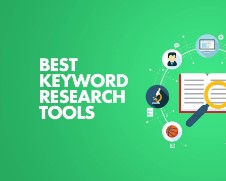Online traffic plays a crucial role in the success of businesses. Whether you’re running a small local startup or a large multinational corporation, the ability to attract, retain, and convert online visitors can significantly impact revenue growth and brand recognition. Business leaders who have successfully managed online traffic have mastered the intricacies of digital marketing, website optimization, and user engagement strategies. This article explores how successful business people manage online traffic to ensure sustained success.
1. Understanding the Importance of Online Traffic
Online traffic refers to the number of visitors who land on a website, click on a link, or engage with a piece of content. It is a key metric for businesses to understand the level of interest in their products, services, or brand. Online traffic can come from various sources, such as:
Organic Search: Visitors who find a website through search engines like Google, Bing, or Yahoo.
Paid Search: Traffic driven through paid ads, such as Google Ads.
Social Media: Visitors arriving from platforms like Facebook, Twitter, LinkedIn, and Instagram.
Referral Traffic: Visitors who come through links on other websites or blogs.
Direct Traffic: Users who directly type the website’s URL into their browser.
Managing online traffic effectively requires understanding these various sources, their dynamics, and how they can be used to drive both short-term and long-term business goals.
2. Setting Clear Objectives for Traffic Management
The first step in managing online traffic is setting clear and measurable objectives. Successful business people understand that traffic is not just about quantity, but also about quality. They aim to:
Increase Website Visitors: More visitors generally mean more potential customers. Business leaders aim to scale traffic, ensuring that their websites are visible to as many people as possible.
Improve Conversion Rates: The ultimate goal is not just to attract visitors but to convert them into customers. Conversion Rate Optimization (CRO) strategies help maximize the efficiency of a website’s ability to turn traffic into sales or leads.
Enhance Brand Awareness: Consistent traffic from various sources helps build brand visibility and trust among consumers, leading to greater recognition and loyalty.
Engage the Audience: Successful traffic management doesn’t just focus on getting visitors; it focuses on engaging them to spend more time on the site, return often, and share content with their networks.
3. Creating a Solid Digital Marketing Strategy
To manage online traffic effectively, business leaders rely heavily on digital marketing strategies. These strategies encompass a wide range of tools and techniques that drive traffic to their websites. Some of the most important strategies include:
3.1 Search Engine Optimization (SEO)
SEO is one of the most vital elements in driving organic traffic to a website. Successful business people understand the importance of optimizing their websites to appear on search engine results pages (SERPs). Some key aspects of SEO include:
Keyword Research: Identifying and targeting the right keywords that potential customers are searching for.
On-Page SEO: Optimizing individual web pages with relevant keywords, meta tags, content, and internal linking.
Off-Page SEO: Building backlinks from high-authority websites to improve domain authority and search engine ranking.
Technical SEO: Ensuring that a website is technically optimized, including fast loading speeds, mobile-friendliness, and clean code.
By consistently refining their SEO efforts, successful business leaders can maintain high visibility in search results, attracting organic traffic over time.
3.2 Paid Advertising
Paid advertising is another crucial strategy that successful business people use to manage online traffic. Platforms like Google Ads, Facebook Ads, LinkedIn Ads, and Instagram Ads allow businesses to target specific audiences based on demographics, behavior, location, and more.
Business leaders often use paid campaigns to:
Target Specific Audiences: Ads can be tailored to specific groups of potential customers based on their interests, searches, and online behavior.
Drive Immediate Traffic: Unlike SEO, which can take time to show results, paid ads generate traffic quickly.
Retarget Website Visitors: Paid campaigns can also target people who have already visited a website, encouraging them to return and complete a purchase or sign up.
Successful business owners often combine paid advertising with organic methods to create a balanced traffic management strategy.
3.3 Social Media Marketing
Social media platforms like Facebook, Instagram, Twitter, and LinkedIn are critical for driving traffic. Successful business people understand the importance of social media for building relationships with their audience and fostering engagement.
Key tactics include:
Regular Posting: Creating consistent, relevant content that keeps the audience engaged and encourages visits to the website.
Paid Social Ads: Running targeted ads on social media platforms to reach a broader audience.
Influencer Marketing: Collaborating with influencers to promote products and attract their followers to the website.
Hashtag Campaigns: Leveraging popular and niche hashtags to increase discoverability and drive traffic.
By creating valuable content and interacting with their audience, business leaders keep their social media pages active and their websites traffic-rich.
4. Website Optimization for Better Traffic Conversion
While attracting traffic is essential, converting that traffic into customers is equally important. Successful business people understand that website optimization plays a vital role in turning visitors into loyal clients. Key aspects of website optimization include:
4.1 User Experience (UX) and Design
A seamless and intuitive user experience is critical to ensuring that visitors stay on a website and explore what it has to offer. Business leaders prioritize:
Mobile Responsiveness: With a growing number of users browsing from mobile devices, a website must function smoothly on smartphones and tablets.
Easy Navigation: A clean, simple, and well-structured website design allows visitors to find what they’re looking for quickly and easily.
Fast Loading Speeds: Websites that load slowly can lead to higher bounce rates. Successful businesses ensure their websites load in under three seconds.
Clear Calls to Action (CTAs): Business owners design websites with prominent CTAs that guide visitors to take the desired action, whether it’s making a purchase, signing up, or contacting the business.
4.2 Conversion Rate Optimization (CRO)
Conversion rate optimization (CRO) focuses on improving the percentage of website visitors who convert into customers. Business leaders use various CRO techniques, such as:
A/B Testing: Running experiments to test different versions of a web page to determine which performs better in terms of conversions.
Simplified Checkout Process: Ensuring that the checkout process is straightforward and quick to reduce cart abandonment.
Trust Signals: Adding elements like customer testimonials, security badges, and money-back guarantees to make visitors feel secure about their decision.
Effective CRO strategies help increase the value of the traffic a business already has.
5. Data Analysis and Traffic Monitoring
One of the hallmarks of successful business people is their ability to leverage data. By regularly tracking and analyzing online traffic, they can identify what is working, what isn’t, and where adjustments need to be made.
Some essential tools for monitoring online traffic include:
Google Analytics: A free tool that provides detailed insights into website traffic, including demographics, behavior, and sources of traffic.
Heatmaps: Tools like Hotjar or Crazy Egg help businesses understand where visitors click, scroll, and spend time on a page.
Traffic Segmentation: Breaking down traffic data by different segments (organic, paid, social, etc.) to determine the most effective sources.
By making data-driven decisions, successful business people can fine-tune their strategies, ensuring sustained growth.
6. Continuous Improvement and Adaptation
Online traffic management is not a one-time effort. It requires continuous monitoring, adaptation, and innovation. Successful business people understand that the digital landscape is ever-changing, and they constantly seek ways to stay ahead of the competition.
They:
Experiment with New Channels: New marketing channels and technologies, like TikTok or voice search, present fresh opportunities to drive traffic. Business leaders embrace these trends early to stay relevant.
Update Content Regularly: Updating existing content and creating fresh, valuable resources ensures that websites stay competitive in search engine rankings.
Respond to Feedback: Listening to customer feedback and analyzing traffic data helps businesses identify pain points and areas for improvement.
By continuously optimizing their approach, successful business leaders stay agile and relevant in the fast-paced online environment.
Managing online traffic is a multifaceted challenge that requires strategic thinking, technological knowledge, and continuous effort. Successful business people combine SEO, paid advertising, social media marketing, and website optimization to attract and convert visitors. They rely on data analysis to refine their strategies and consistently improve their results. By staying adaptive and forward-thinking, these leaders ensure that their businesses can thrive in an increasingly digital world, driving sustained traffic and long-term success.




